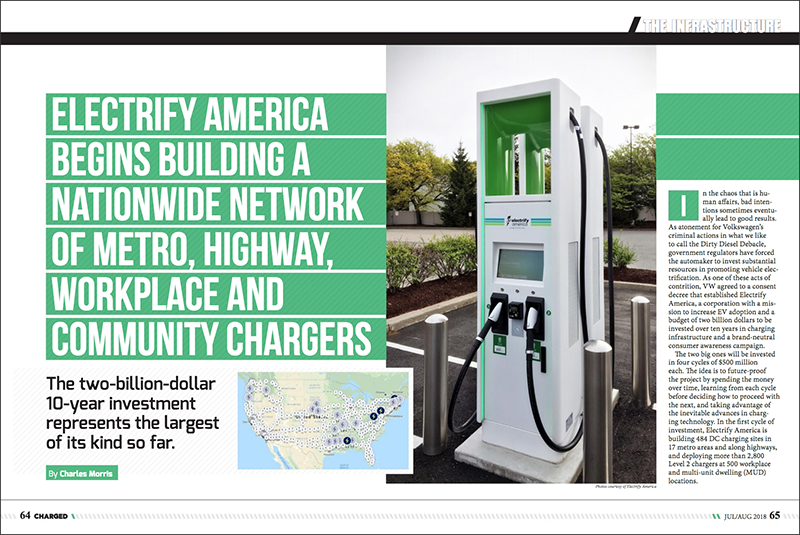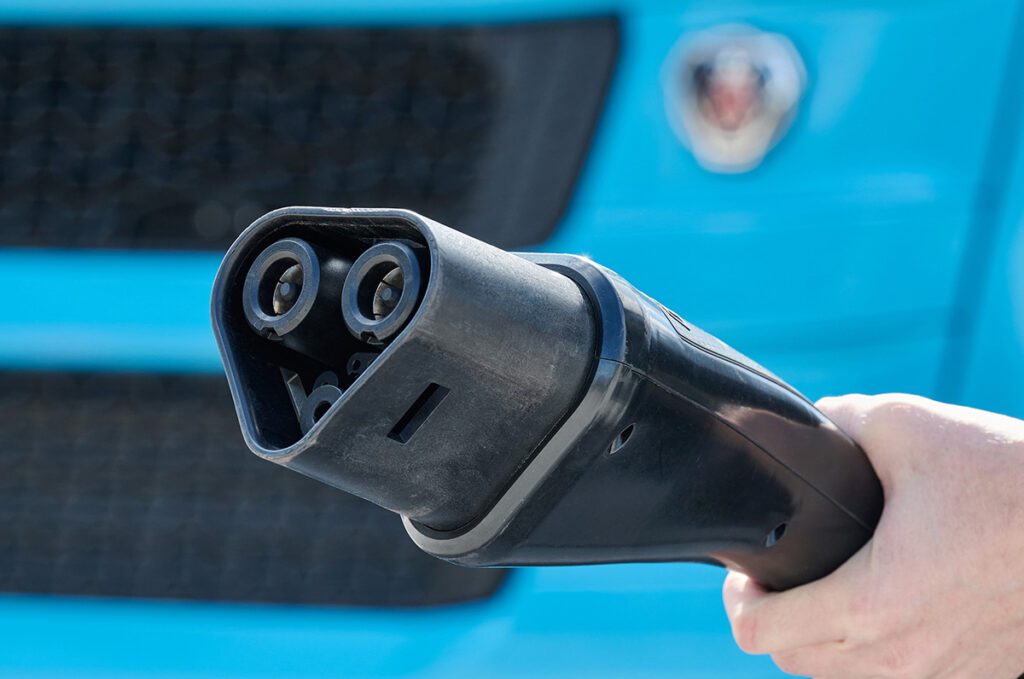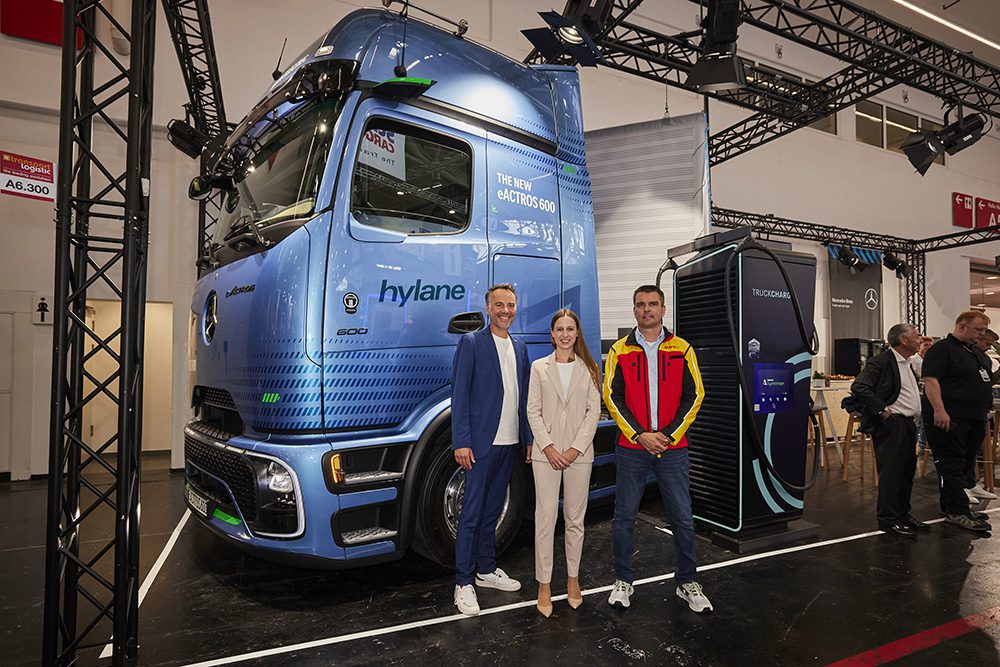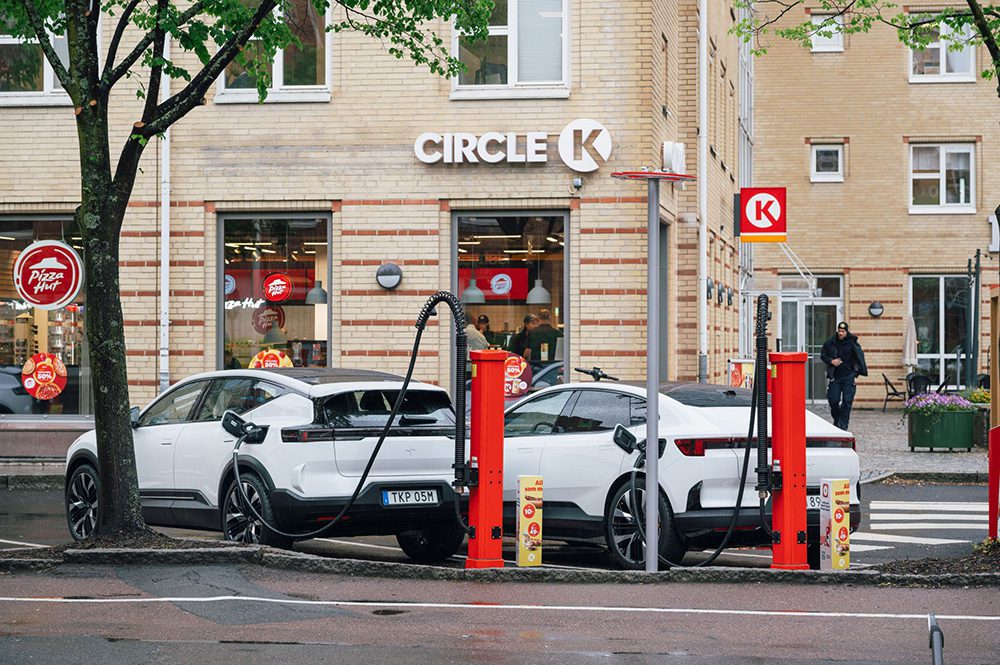The two-billion-dollar 10-year investment represents the largest of its kind so far.
In the chaos that is human affairs, bad intentions sometimes eventually lead to good results. As atonement for Volkswagen’s criminal actions in what we like to call the Dirty Diesel Debacle, government regulators have forced the automaker to invest substantial resources in promoting vehicle electrification. As one of these acts of contrition, VW agreed to a consent decree that established Electrify America, a corporation with a mission to increase EV adoption and a budget of two billion dollars to be invested over ten years in charging infrastructure and a brand-neutral consumer awareness campaign.
The two big ones will be invested in four cycles of $500 million each. The idea is to future-proof the project by spending the money over time, learning from each cycle before deciding how to proceed with the next, and taking advantage of the inevitable advances in charging technology. In the first cycle of investment, Electrify America is building 484 DC charging sites in 17 metro areas and along highways, and deploying more than 2,800 Level 2 chargers at 500 workplace and multi-unit dwelling (MUD) locations.
EA has already begun installing stations. Six or seven should be up and running by the time you read this, and the rest of the first phase is scheduled to be completed or under construction by June 2019.
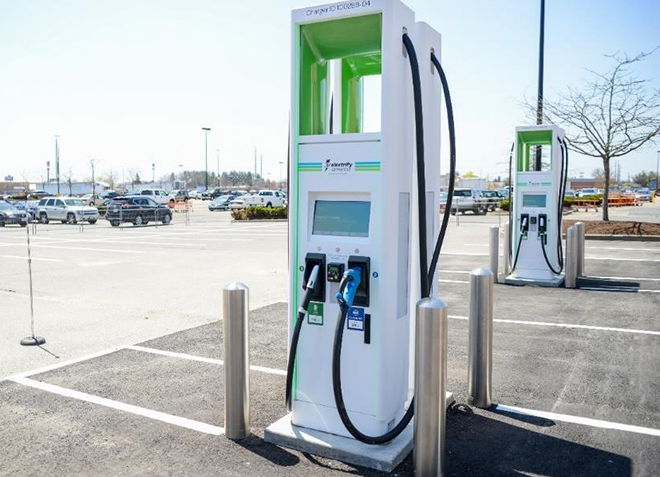
To understand what a big deal this is for EV adoption, let’s look back at a previous turning point in tech history. In the late 1990s, internet developers envisioned applications such as audio, video and telephony, but existing bandwidth was inadequate. Over the course of a few years, telecoms rolled out fiber-optic backbones around the world, and developers quickly took advantage of the new infrastructure, creating the modern broadband internet (for better or for worse). Today, it’s plain that existing fast charging infrastructure will be inadequate for the new generation of long-range EVs that’s in the pipeline. Electrify America’s network, combined with a wave of other fast charging networks now being built in various state-level projects (to say nothing of Tesla’s frenzied expansion of its Supercharger network), will create a nationwide web of chargers that will make topping up an EV almost as fast as fueling a fossil-burner, making long road trips practical and eliminating one of the main objections cited by would-be EV buyers.
Charged recently chatted with Brendan Jones, Electrify America’s first official employee and now the company’s COO in charge of business development and operations. From what he told us, it appears that Electrify America is going about things the right way, moving quickly but methodically, with plenty of input from interested parties, and learning from the mistakes that were made in previous waves of public charging deployment (for example, poor site selection, insufficient attention to ongoing maintenance, and unnecessary complications for users).
It’s no wonder the company has a sound buildout plan, considering the all-star EV charging team it is assembling. There are few in the US with as much practical EV experience as Brendan Jones, who has been at the forefront of the industry from the early days. Before joining EA, he was Nissan’s Director of EV Sales beginning with the launch of the first LEAF. In those days, Nissan was heavily involved with deploying the first fast chargers in key US markets. After learning first-hand that infrastructure and EV sales go hand-in-hand, Jones joined charging network operator EVgo, before being hand-picked to lead Electrify America’s ambitious rollout.

Driving EV adoption by speeding up charging
Jones has a clear view of Electrify America’s mission: “Our job is to increase EV adoption. It’s about 1% market share, and we believe that we can move that number with high-speed charging, and facilitate sales of the new vehicles that the OEMs are bringing to market. The consent decree is about increasing ZEV adoption. The methodology is EV infrastructure.”
“We’ve seen the success of Tesla with high-speed charging,” Jones continues. “And if we all agree that, at least in part, the Supercharger network has driven the sales of Tesla – and I think there’s a lot of evidence of that – then this high-speed charging network that we’re putting in should have an equal effect on the other OEMs who are coming out with cars that charge at rates in excess of 50 kW. We want to get to a point where we have an experience close to what an ICE driver does today in public-based fueling. And I believe these stations give us the path to get there.”
As a new generation of EVs begins to appear on the roads, ranges are getting longer, and this means charging levels need to get higher. Several OEMs are developing DC fast charging technologies that operate at 150 kW or above. Porsche has demonstrated a new system that can deliver up to 800 V and 350 kW.
“When you see that from 2018 forward, the majority of the cars that are coming out have over 200 miles of range, from a whole plethora of manufacturers, it certainly is a strong indicator that higher range and faster charging is the way the industry is pushing,” says Jones. “We’re going to make sure that we supply the requisite amount of infrastructure to enable range confidence.”
Jones told us that EA has already charged the first 150 kW production vehicle, although he can’t yet reveal the brand. “The manufacturer was kind enough to provide a vehicle and test it on one of our public chargers, and it hit 150 kW, no problem.”
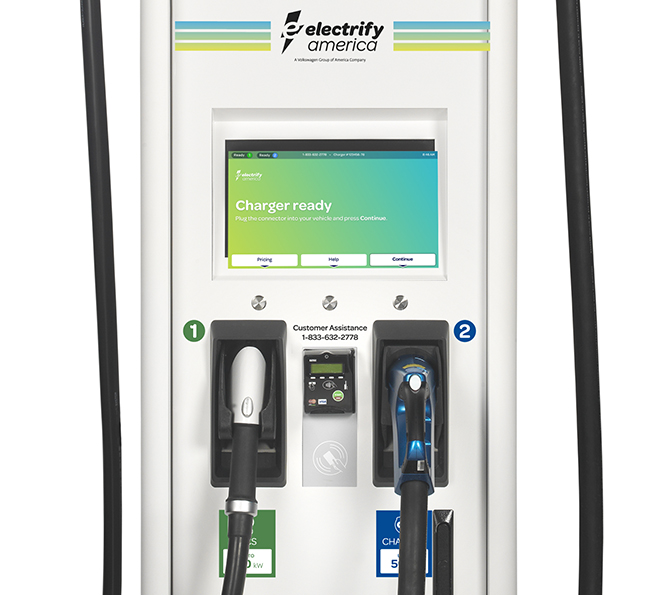
The key to the highway
Electrify America’s DC fast charging and Level 2 charging programs are separate, and the company is approaching each in a different way. “For the DC sites, we are the owner and operator of the chargers,” Jones explains. “We are installing 300 highway sites and 184 metro sites. The metro sites are spread through 17 metro areas. For the selection of metro areas, we went through a lengthy process of analyzing EV ownership, potential future EV ownership, demographics, education, and also state and federal incentives, to see where we will have the most EV growth within the next year, and decide which locations to target.”
“The highway sites will connect all the US metros with two cross-country routes – one in the middle of the country and one more southern – and then the connections along the east and west coasts,” Jones continues. “The highway sites are always targeted to be close to highway access. We’re trying to find exits that you can reach from both sides of the highway, so we don’t have to deploy two stations at the same location. We’re always looking for amenities for our customers, so if they are there for 15 minutes or up to an hour, they have something to do, food, shopping, a restroom and all of that.”
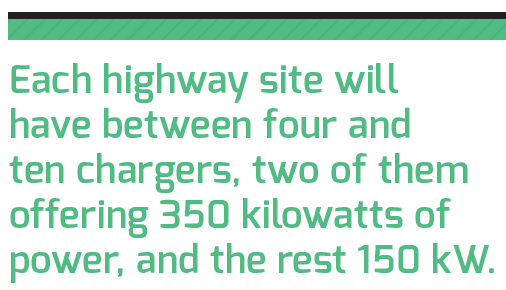
Each highway site will have between four and ten chargers, two of them offering 350 kilowatts of power, and the rest offering 150 kW. All of the chargers will support CCS Combo, and one of the 150 kW chargers will be a dual station that also supports CHAdeMO. The CHAdeMO side will deliver 50 kW, and the CCS side either 150 or 350 kW. Each charger will provide dedicated power without power sharing, so the maximum load of a fully built-out site could theoretically be as much as 1,900 kW (8 times 150 plus 2 times 350). Electrify America says each site will draw “between one and two megawatts of power.”
Of course, pushing more wattage through a cable means more heat (or a thicker cable that would be impractical for users), so liquid-cooled cables are de rigueur for the new generation of high-power chargers. Jones told us that all of EA’s 150 and 350 kW chargers feature liquid-cooled cables.
Big box buddies
Many highway stations will be located adjacent to convenience stores and/or shopping centers. Several retail chains including Casey’s General Stores and Sheetz, and mall operators including Simon Properties and Brixmor, will be participating. At the time of our interview, Jones told us EA was “about 70 to 80 percent done with site acquisition.”
Big box behemoths Walmart and Target are both partners. “We have a team which is securing all of these sites and for that it’s easier to have a partnership with Walmart and Target because they have great sites with the right amenities, usually at the right locations either metro or on the highway,” said Jones. “They are great partners for us, because we don’t have to individually find sites. They open up their sites and we see what matches our plan.”
EA’s agreements with its site partners are “different sizes and shapes depending on the positioning of the companies, but they all guarantee that they’ll have parking available at the charger for EV drivers,” said Jones. “All allow charging on a 24-hour basis. We have a list of criteria that we work through.” EA is looking for locations that will be clean, safe and convenient for its customers: “Well-lit parking lots around major thoroughfares or right off the highway, great sight lines, and conveniences such as stores, restaurants and bathrooms. These retailers fit a lot of those criteria, and we’re putting a lot of sites in at their locations as a result.”
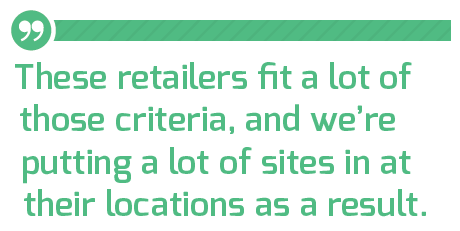
Electrify America will be installing separate utility services for the power-hungry charging sites. This brings up the issue of where to locate the chargers in a gargantuan big-box parking lot in order to control installation costs. “You have to balance between specific needs of the customer,” says Jones. “You want the walking distance to the store not to be cumbersome, but you also want to make sure that you control cost by not trenching too much. A lot of the site cost is in bringing in the transformer and then attaching the transformer to where the power source is. So you have to work together to do the site planning in conjunction with the retailer. California has some specific requirements in terms of ADA – you have to make sure you have a path of travel from the charger, so we have to make sure that’s accounted for as well in the California installations.”
Charging for charging
Unlike the Level 2 program, which allows site hosts to set their own pricing policies, the DC Fast Charging Network currently offers consumers a regional rack rate available through a credit card purchase.
An Electrify America app that people can use all over the country is expected to be available in Q3 of 2018. By Q4, EA plans to launch more pricing models in addition to the plain vanilla pricing that’s in place now. “Those will be subscription services and then customized programs for OEMs or other groups that want something different than rack-rate credit card,” says Jones.
EA plans to support all the different authentication models that are out there. “You will have RFID cards if somebody really, really wants them,” says Jones. “We’re hoping to get away from them, but if they’re needed, all chargers that EA installs will be able to have one. All the different iterations of mobile apps will be available as well.”
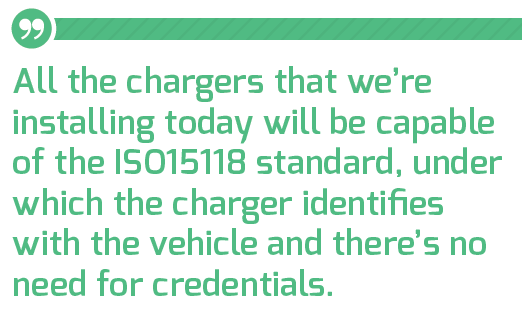
There’s also a new authentication model in development, which might just prove to be the wave of the future. “All the chargers that we’re installing today will be capable of the ISO15118 standard, under which the charger identifies with the vehicle and there’s no need for credentials [such as an RFID card, a credit card or a mobile app]. The handshake is taken care of between the vehicle and the car, and they self-identify and the charge takes place. There are several cars that’ll come out in the next 3 to 4 years with that capability.”
EA aims to make pricing as transparent as possible – each station will have a large screen with real-time updated pricing and an estimated cost over time. Greenlots is providing a purpose-built back-end platform that will manage all of the chargers, including maintenance and customer relations. It will also provide back-end capabilities for apps and web sites as those are supported.
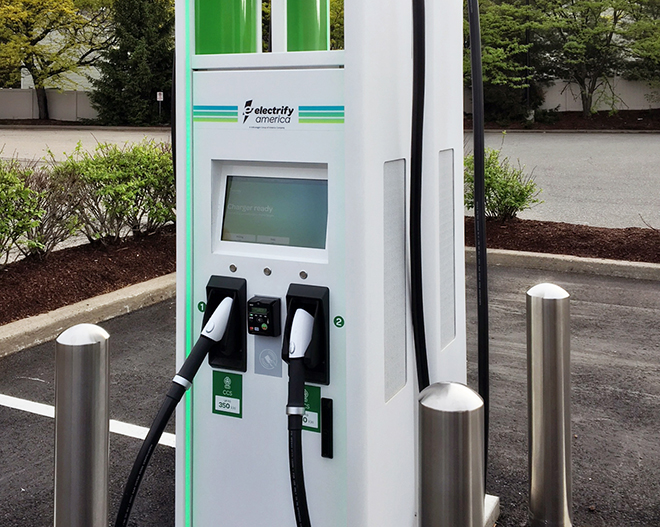
Vendors and installation partners
Electrify America has announced four equipment vendors: Swiss electronics giant ABB, Portugal’s Efacec, South Korea’s Signet EV and California-based BTC Power. EA tried to minimize technical differences among the different equipment vendors. All the stations are around eight feet tall, and all will have common design elements. All will be branded with Electrify America’s logo and its white and green livery. The user interface is provided by a 15- or 16-inch screen, on which site owners can display some branding elements. “We haven’t determined whether we’re going to allow branding on the chargers themselves yet,” says Jones. “We’re open to that discussion with retailers. What we don’t want is for the chargers to look like a NASCAR vehicle, which wouldn’t be aesthetically pleasing.”
“When we started this a little over a year ago, [we decided to] provide 350 kW DC charging stations,” Jones told us. “We worked with the vendors on providing a similar station experience for all of our sites, because we didn’t have the time to build our own stations. We went through a lengthy RFP process with all of the current DC charging suppliers, then we selected who we believed could have a product, reach certification, and fulfill our requirements within the year.”
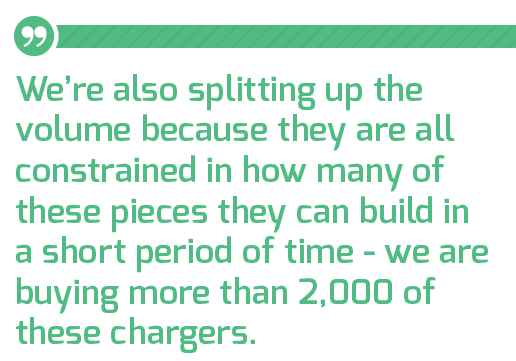
“All the vendors achieved their certification – we have all of the production samples in, and we have a lab where we are testing them. So it seems that we made the right decision going with the four vendors. We’re also splitting up the volume because they are all constrained in how many of these pieces they can build in a short period of time – we are buying more than 2,000 of these chargers,” said Jones.
EA is working on plans for signage at highway exits to direct users to the charging stations. “The government affairs team is working with state DOTs, and we’ve made progress in some states,” said Jones. “I would say the results are promising. Tesla’s been forced in many circumstances to use private signs, but has gotten some public signs as well, so we’re working on the same parameters that they follow.”
EA will be using 2 installation partners for all the DC fast charger sites: Kansas City-based Black & Veatch will handle site design and construction in 24 states from the Pacific Northwest to the Southeast, as well as in California; the SAI Group, based in Salem, New Hampshire, will handle the job in 16 states in the Northeast, Mid-Atlantic, South-central and Southwest regions of the country. “They’re the design and build companies,” says Jones. “They manage design, permitting and final site plans, then they manage the subcontractors for installation.”
Workplace and MUD charging
One important lesson that’s been learned over the past few years is that different forms of charging are appropriate for different situations: DC fast charging along highways and in city centers; and Level 2 at workplaces and multi-unit dwelling (MUD) locations such as apartment buildings. Electrify America has chosen to keep these two charging programs separate.
Under the Level 2 program, site hosts will own the chargers, but EA pays for the equipment and installation, and will be responsible for charger maintenance for 10 years or “until the consent decree is over.” Site hosts must cover electricity costs on their own, but they are free to set their pricing however they like, whether they choose to offer free charging or wish to try to recover electricity costs.
“For the Level 2 program, we’ve partnered with EV Connect, Greenlots and SemaConnect,” says Jones. “They are executing the Level 2 program on our behalf. We’ve divided them up throughout the country and they’re charged with installing both workplaces and multifamily dwellings. It’s a turnkey project, as opposed to owning and operating the chargers. However, it’s not a grant program because we have to maintain the chargers for the period of the consent decree.”
“Those 3 companies are the operators, but they might subcontract out the installation,” Jones explains. “For example, Greenlots has its own group of contractors that installs its chargers that they’ve used throughout their existence, and they’ll use those for this program as well.”
Keeping the power flowing
Another important thing that network operators are beginning to understand is that ongoing maintenance is a big deal. Electrify America has wisely chosen to oversee maintenance for all of its stations, although it has contracted with a (so far undisclosed) company to perform the actual maintenance. Once the network is operational, it will be monitored through EA’s network operations center, overseen by Director of Service Operations Rob Healey (formerly of BMW).

“We have awarded a national service contract – that announcement is forthcoming,” Jones says. “But we have to maintain the chargers for the life of the consent decree, and we also believe in a couple of fundamental things. I’ve been in this space a while, so preventive maintenance will occur at a minimum of 4 times a year on every charger. Although we’re installing 4 different manufacturers, we have a blended warranty model where we fix the charger first, and then we negotiate separately with the manufacturer on warranty. The charger is always fixed first.”
“We have high aspirations on uptime on an individual charger basis,” says Jones. “We know that some of the most negative comments that have happened in the past have been about chargers that are broken and stranded drivers as a result. So our mission is to not have that happen with drivers that engage with Electrify America stations.”
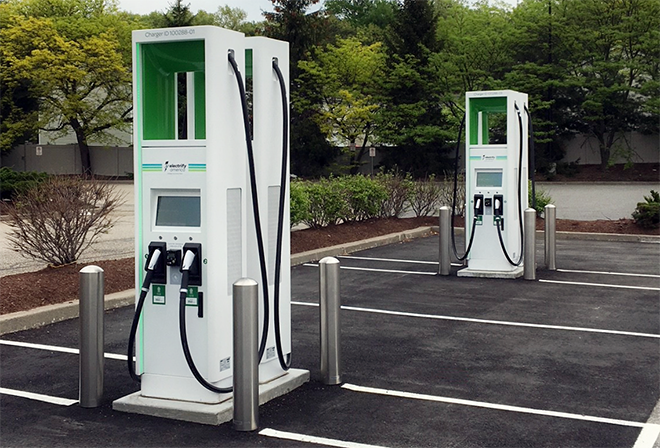
Charging into the future
The EV revolution is a fast-moving one, and there’s a lot about consumer behavior that will have to be learned as the network takes shape. That’s why EA will proceed in four phases, using the lessons learned at each step to allocate resources more efficiently in the next. “Realistically I think we’ll get more data out of phase 1 when we’re already well into phase 2 because of the gap in time it took to get phase 1 started,” says Jones. “But certainly as we move into phase 3 we’ll have a lot of robust data, and we’ll look at utilization time on the chargers, when and where they’re being utilized, what state of charge did the vehicles come in at, what’s the optimum spacing we have to have for charging on the highways, what type of density in the city, what charging rates.”
“It’s much harder today to install a DC fast charger in the inner city than it is on the highway,” Jones points out. “On the highway, you have an abundance of land. You just need to make a deal. So we have to arrive at models that allow us to still have redundancy, meaning that 2 drivers, or 3 or 4, can pull up at once and charge, and that if you do have a unit down, you can still deliver charging. In the inner city model, we’re going to learn all that.”
“We know that we have an increasing population that’s moving [into city centers], so we need to find out, as the population, especially the millennials, migrate more out of single-family homes into urban dwellings, what type of public charging do they need? And hopefully this model gives us some great insights, not necessarily for the next 5 years but certainly for the next 10 years.”
Electrify America is in the process of putting together its plan for the second cycle, and has an open web site to accommodate proposals. Prospective site owners and technology providers are encouraged to submit their ideas – “whatever might be helpful for the second cycle in order to increase ZEV adoption.”
This article originally appeared in Charged Issue 38 – July/August 2018 – Subscribe now.






